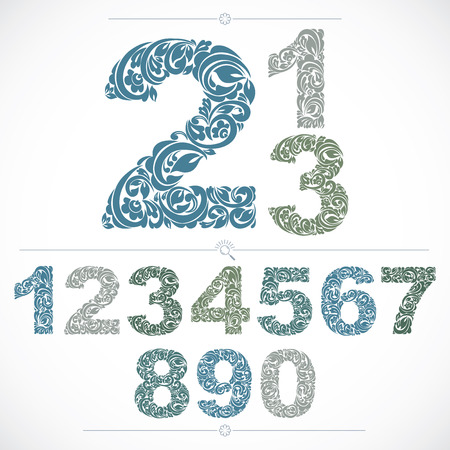Introduction to the Celtic Cross Spread
The Celtic Cross spread stands as a cornerstone within British tarot practice, renowned for its depth and versatility. For generations, readers across the United Kingdom have turned to this classic layout to unravel life’s complexities and offer insightful guidance. Its enduring popularity is not merely a matter of tradition; rather, it owes much to the spread’s remarkable ability to capture the intricate interplay of circumstances, challenges, and potentials that shape an individual’s journey. From bustling London parlours to tranquil countryside gatherings, the Celtic Cross has become almost synonymous with tarot readings in Britain, forming a foundational framework upon which countless interpretations rest. Whether used by seasoned practitioners or those new to the cards, this spread offers a comprehensive narrative arc—one that reflects both personal introspection and the broader cultural tapestry of British spiritual enquiry. Through its structured positions and evocative symbolism, the Celtic Cross continues to serve as an invaluable guide for those seeking clarity amidst life’s uncertainties.
2. Historical Roots and Cultural Legacy
The Celtic Cross spread, now regarded as a cornerstone of tarot reading in the UK, holds a fascinating lineage that intertwines with the ancient traditions of the British Isles. To fully appreciate its significance, one must look back to its origins and the enduring cultural influences that have shaped its use.
The Origins of the Celtic Cross Spread
While the precise inception of the Celtic Cross spread is somewhat shrouded in mystery, it is widely believed to have emerged in the late 19th or early 20th century. The structure was popularised by Arthur Edward Waite and Pamela Colman Smith through the iconic Rider-Waite Tarot deck, published in London in 1909. However, its symbolic resonance draws upon much older Celtic motifs—particularly those associated with cross-shaped monuments and sacred geometry found throughout Britain and Ireland.
Celtic and British Influences
| Element | Celtic Tradition | British Influence |
|---|---|---|
| Symbolism | Use of crosses in ancient stone carvings and rituals | Integration into Christian iconography across Britain |
| Spirituality | Druidic reverence for nature cycles and fate | Victorian-era interest in mysticism and divination |
| Structure | Circular layouts in Celtic art and storytelling | Formalisation into a ten-card tarot layout |
The Spread’s Role in Modern British Tarot Practice
The Celtic Cross quickly became a favourite among British tarot readers due to its comprehensive approach, offering insight into both immediate circumstances and deeper underlying currents. Its popularity can also be credited to its adaptability—it suits a wide range of questions, from personal growth to complex life decisions, aligning well with the reflective nature of British spiritual enquiry.
Cultural Legacy in Today’s UK Tarot Community
Today, the Celtic Cross is seen as a rite of passage for both novice and experienced readers across the United Kingdom. It symbolises not only a practical tool for interpretation but also an ongoing connection to Britain’s mystical heritage. Through generations, this spread has helped seekers explore their destinies while honouring the rich tapestry of local tradition—a true testament to its enduring legacy.

3. The Layout: Cards and Positions Explained
The Celtic Cross spread is renowned for its depth and versatility, offering a panoramic view of the querent’s circumstances and inner workings. This spread comprises ten cards, elegantly arranged into two distinct yet interconnected sections: the cross at the centre and the staff to the side. Each card’s placement within these formations is steeped in meaning, reflecting both external events and internal influences.
The Cross: Mapping the Heart of the Matter
The cross consists of six cards forming a cruciform pattern. These positions are as follows:
Card 1 – The Present
Placed at the very centre, this card symbolises the current situation or state of affairs, encapsulating the essence of what is most pressing in the querent’s life.
Card 2 – The Challenge
This card is laid horizontally across Card 1, representing obstacles or challenges that must be faced. It often highlights the immediate tensions or dilemmas entwined with the present.
Card 3 – The Foundation
Sitting beneath the central pair, Card 3 signifies underlying factors or past influences that have shaped the present scenario. In British tradition, this can refer to deep-rooted values or familial legacies.
Card 4 – The Recent Past
Positioned to the left of the centre, this card reflects recent events or experiences that still exert influence upon the current situation.
Card 5 – The Possible Outcome
Above the central position rests Card 5, which points towards potential outcomes or aspirations. It indicates what could be achieved if present energies persist unaltered.
Card 6 – The Near Future
To the right of centre lies Card 6, foretelling developments imminent on the horizon—typically within weeks or months. This card offers a glimpse into forthcoming opportunities or challenges.
The Staff: Guiding Through Broader Influences
The staff is made up of four cards arranged vertically to the right of the cross, each illuminating different facets of influence and advice:
Card 7 – Self-Perception
This card explores how the querent views themselves within their current context—often revealing attitudes, strengths, and vulnerabilities that colour their approach to life’s challenges.
Card 8 – External Influences
Here we find insights into how others perceive or affect the situation. In a British setting, this might include social expectations, workplace dynamics, or family opinions.
Card 9 – Hopes and Fears
This nuanced position uncovers what lies beneath conscious thought—both secret desires and anxieties influencing decision-making processes.
Card 10 – Final Outcome
The culmination of the spread, Card 10 delivers an overview of likely results based on current trajectories. Rather than offering absolute predictions, it gently guides reflection and preparedness for what may come.
By understanding each position’s role within both cross and staff components, practitioners gain profound insight into not only surface events but also deeper motivations and potential outcomes—reflecting a holistic approach much cherished in British tarot tradition.
4. Step-by-Step Interpretation Techniques
Approaching the Celtic Cross spread with a mindful and methodical touch is vital for drawing out its full richness. Rooted in traditional British tarot practice, this process values patience, observation, and the weaving of narrative threads. Below are practical steps, incorporating both heritage wisdom and contemporary nuance, to help you interpret each card and their interplay within the spread.
Setting the Scene: Preparing Your Reading
Begin by grounding yourself and your querent. In British tradition, a cup of tea can be a comforting ritual to open the space. Ensure your cards are well-shuffled and that you invite a moment’s quiet reflection on the question at hand.
Card-by-Card Analysis
| Card Position | Traditional British Focus | Interpretative Tips |
|---|---|---|
| 1. The Present | The heart of the matter; what currently surrounds the querent. | Look for symbols resonant with daily life or emotional state. |
| 2. The Challenge | An immediate obstacle; often understated in British readings as “the rub.” | Seek subtle tensions—sometimes what is not said is as telling as what is revealed. |
| 3. The Foundation | Past influences; family and ancestry play a key role here in local lore. | Consider generational patterns or inherited beliefs underpinning the situation. |
| 4. The Recent Past | A recent event or shift; traditions may highlight community or social context. | Connect events to seasonal changes or local customs for deeper resonance. |
| 5. The Possible Outcome | A potential future, “if things proceed as they are.” A classic British emphasis on pragmatism applies. | Treat this as guidance rather than fate—what can be gently nudged? |
| 6. The Near Future | The next chapter; often interpreted with an eye for emerging opportunities. | Focus on practical steps that align with local values or customs. |
| 7–10. The Staff (Self, Environment, Hopes/Fears, Final Outcome) | An evolving story—each card adds texture, much like characters in a village tale. | Synthesise their meanings by observing how energies support or challenge one another. |
Narrative Thread: Weaving Card Interactions
One hallmark of British tarot interpretation is crafting a narrative—consider how cards converse with each other. Does a challenge card echo themes from the foundation? Might hopes and fears reflect ancestral stories? Pay attention to pairs or groups of cards sharing suits, numbers, or motifs; these often reveal hidden layers of meaning when viewed through a local lens.
Cultural Nuance: Honour Subtlety and Restraint
Avoid sweeping statements; instead, favour gentle suggestions and allow room for personal reflection. Remember that understatement is prized—offer observations that prompt thought without presumption. For example:
- If drawing The Tower in the ‘Hopes/Fears’ position, you might remark, “Sometimes change is unsettling, but it can clear the way for something sturdier.”
- If Cups dominate the spread, consider how emotions and relationships are influencing practical affairs—a common theme in British readings where community bonds are strong.
Troubleshooting Common Pitfalls
- Overemphasis on single cards: Always return to the broader story rather than focusing solely on dramatic images.
- Mistaking symbolism: Refer back to traditional interpretations but let local folklore inform your understanding where appropriate.
- Losing objectivity: Maintain a balanced view—British tradition values even-handedness and grounded insight above all else.
By following these step-by-step techniques, rooted in traditional British approaches yet open to nuanced interpretation, your Celtic Cross readings will carry both depth and cultural resonance, offering guidance that feels at once timeless and deeply personal.
5. Common Themes in British Readings
Within the context of British tarot practice, the Celtic Cross spread often reveals a tapestry of themes and archetypes that resonate deeply with local history, folklore, and collective experience. While each reading is unique to the individual seeker, certain motifs frequently emerge, rooted in both the mythic landscape of Britain and its contemporary cultural psyche.
The Hero’s Journey and Arthurian Echoes
It is not uncommon for British interpretations of the Celtic Cross to reflect elements of the hero’s journey, a narrative arc beloved in national stories from King Arthur to Robin Hood. Cards such as The Chariot or The Knight of Cups may be seen through the lens of questing knights or seekers embarking on transformative journeys. The presence of these archetypes offers reassurance that adversity can be met with courage and resilience—a sentiment woven into the fabric of British storytelling.
The Role of Landscape and Ancestry
Given Britain’s rich landscape—its rolling hills, ancient forests, and standing stones—tarot readings here are often imbued with a sense of place. The suit of Pentacles, for example, might be interpreted as a connection to land, heritage, and generational wisdom. Readers may draw parallels between cards and ancestral guidance, reflecting the deep-rooted respect for lineage that underpins many British families.
Cultural Stoicism and Emotional Nuance
The famed British “stiff upper lip” sometimes surfaces in how emotions are read within the spread. Cards like The Five of Cups or The Hermit may highlight quiet endurance or introspective self-reliance rather than dramatic displays of emotion. This nuanced approach honours the tradition of facing challenges with dignity while acknowledging the importance of inner reflection.
Community, Tradition, and Social Change
British readings frequently explore themes around community—mirrored in cards such as The Hierophant or Three of Cups—emphasising belonging, tradition, and the role of social structures. At times, particularly in modern contexts, readings might also address tensions between tradition and progress, reflecting ongoing dialogues in British society about identity and change.
Ultimately, these well-loved interpretations and archetypal stories lend a distinctly British flavour to the Celtic Cross spread. They create a living bridge between ancient wisdom and contemporary life, allowing each reading to serve not only as personal insight but also as a reflection on what it means to navigate life’s mysteries within Britain’s storied landscape.
6. Integrating the Celtic Cross in Modern UK Tarot Practice
The enduring appeal of the Celtic Cross spread lies in its balance of tradition and adaptability—a quality that resonates deeply within modern British tarot practice. As society evolves, so too do the ways we interpret and apply this ancient spread. To blend tradition with contemporary British life, it is essential to honour the roots of the Celtic Cross while also embracing the unique contexts and concerns of today’s seekers.
Respecting Tradition While Embracing Change
The Celtic Cross has long been a favourite among tarot readers across the United Kingdom, cherished for its structure and depth. When working with clients or conducting personal readings, begin by acknowledging the historical significance of each card position. Let the traditional meanings serve as a foundation, but do not hesitate to adapt your language and interpretations to suit modern sensibilities. For example, where older texts might reference societal roles or events less relevant today, update your explanations to reflect current realities—be it career transitions, digital relationships, or mental health awareness.
Adapting the Spread for Contemporary Concerns
Modern life in Britain is richly diverse and dynamic. Consider tailoring the questions posed in the spread to address issues such as work-life balance, evolving family structures, or navigating multicultural environments. The “Cross” can illuminate internal conflicts or aspirations, while the “Staff” provides a lens on external influences—a structure perfectly suited for exploring both personal growth and professional challenges.
Tips for Professional and Personal Readings
- Personalise Your Approach: Encourage querents to express their specific concerns in their own words. This fosters engagement and relevance.
- Use Inclusive Language: Reflect the diversity of modern Britain by avoiding assumptions about background, identity, or beliefs.
- Incorporate Local Symbols: If appropriate, weave in references from British culture—such as seasonal changes, local folklore, or community life—to deepen resonance.
Bringing Tradition into Everyday Life
The Celtic Cross remains a bridge between past wisdom and present experience. Whether reading for yourself or others, let its structure guide you but remain responsive to the needs of contemporary British society. By doing so, you ensure that this classic spread continues to inspire clarity and insight for generations to come.


